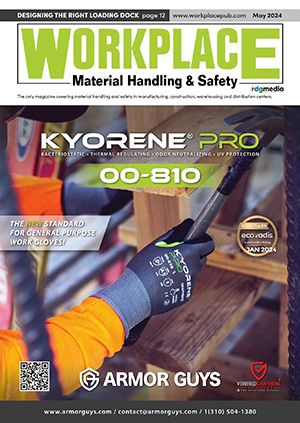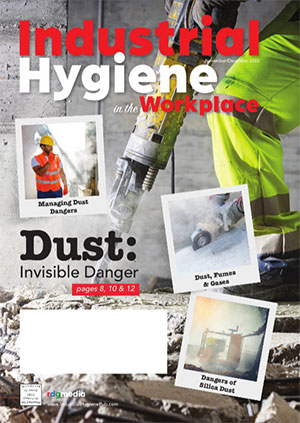Safety Training Essentials
How should an employer tackle the task of providing effective safety training?
By: Dr. David Stumbo, OHST, CSP, Contributor
Note: employer here applies to managers and employees responsible for safety training.
I recently investigated an incident in which a skid-steer operator was fatally injured. It was traumatizing for co-workers to witness and tragic for the family who survived him. Inadequate safety training was identified as a contributing factor in a Kentucky State FACE Program Fatality Assessment & Control Evaluation.[i] It’s been my experience that numerous workplace fatalities are similar in this regard. Training is one of the biggest safety-related responsibilities an employer will face. It’s often a matter of life and death.
How then should an employer tackle the task of providing effective safety training? There’s not an easy answer. Whether in lecture to my students or providing guidance to clients, my response is this: IT DEPENDS. It depends on the many circumstances which exist. The most significant circumstance is the “philosophy of safety” which prevails in the organization.
SAFETY PHILOSOPHIES: AKA SAFETY CULTURE
Although safety culture is addressed in many fine textbooks, three distinct philosophies can be distilled. These are important to consider, as they will determine the quality and quantity of training that can be expected to be provided at a given workplace.
Risk-based: This tends to result from circumstances of limited resources (i.e., time, funding and expertise) where a risk assessment determines the training provided. For example, forklift traffic is determined to be the most hazardous job at the facility, so the only training provided is for forklift operations. Because other training is left undone, the employer could find itself in trouble with the Occupational Safety and Health Administration (OSHA), or (worse) dealing with injuries or fatalities. OSHA penalties are nothing compared to the trauma of a fatality.
Compliance-based: This approach is used by employers who just want to meet their duty of regulatory compliance. You must determine which OSHA regulations apply and then implement a training program that complies. For example, if an OSHA standard requires retraining at least annually, then the employer only conducts the training annually. This approach to training can help avoid OSHA fines, injuries and fatalities, so it’s preferred over the risk-based approach. A problem with compliance-based training comes from the performance-oriented nature of many OSHA regulations, which carry terms like adequately and frequently enough. These subjective requirements make it difficult to know if the training provided does indeed comply. That is, you may think that you’re in compliance, but find out after an OSHA inspection that the agency did not consider the training adequate.
Top shelf: This philosophy seeks to do better than just maintaining compliance. Safety training begins with compliance and improves over time, finding commonality with management approaches like kaizen and the plan-do-check-act cycle. A challenge with the top shelf training program is how to know if improvements are, in fact, occurring. That requires tracking training performance metrics such as the number of training sessions conducted or number of employees trained. Top shelf training programs often go above OSHA regulatory compliance up to compliance with voluntary consensus standards such as ANSI/ASSP Z490.1, Criteria for Accepted Practices in Safety, Health and Environmental Training.[ii]
RECOMMENDATIONS
While top shelf training requires even more resources and expertise than the other two philosophies, I have seen its value demonstrated by world-class companies.
Expertise: Knowledge, skills and abilities
The effectiveness of safety training depends on the level of expertise that supports it. Making a sound determination about where to focus time and energy relies on a minimal level of expertise. If the requisite expertise doesn’t exist inside the organization, the employer must decide whether to develop it internally, hire an outside safety consultant, or utilize some combination of these. In most cases, developing additional expertise is worthwhile. This may take the form of self-education, attending training courses, or taking college coursework.
Basic, cost-free information on hazard recognition (essential in conducting risk assessments) as well as OSHA compliance can be found on www.osha.gov and other public sector websites. These resources could be beneficial to all employers whether risk-based, compliance-based, or top shelf.
For compliance-based and top shelf organizations, extensive fee-based information and training is available from numerous private firms, like the American Society of Safety Professionals and National Safety Council. Instructor-led training on OSHA standards is available through OSHA’s Training Institute Education Centers such as the one hosted by Eastern Kentucky University,[iii] where you’ll see my name among the experienced instructors.
Nationally recognized training certifications, such as those listed below, can establish and maintain the high levels of expertise preferred by many top shelf employer:
- OSHA, Authorized Outreach Instructor
- Board of Certified Safety Professionals, Certified Instructional Trainer
- Association of Talent Development, Certified Professional in Talent Development
Start with a solid foundation: I often use OSHA’s publication #3824, Resource for Development and Delivery of Training to Workers[iv] as a good template. This clearly-written booklet incorporates essentials like adult learning principles and continuous improvement practices. It includes important considerations such how to train employees who aren’t native English-speakers. Another favorite of mine is Hazard Prevention through Effective Safety and Health Training (2012), edited by Joel Haight.
Determine the delivery method: Employers must decide whether to provide training face-to-face (instructor-led), online (computer-based), or through some hybrid of these. Online delivery has become common and is likely to grow in application, but I hope that employers will at least choose hybrid training, as I find that face-to-face training is more effective across all learning styles. This view is shared by OSHA, which states in a 2011 Letter of Interpretation,[v] “OSHA believes that the effectiveness of training is enhanced by trainer/trainee interaction …”
Use real-world examples: I prefer to use case studies in which the hazards I’m training about (i.e., falls and electricity) exist in the real-world because students find them interesting. Two excellent no-cost sources for these are reports produced by the National Institute for Occupational Safety (NIOSH) and Health’s Fatality Assessment and Control Evaluation Program and the U.S. Chemical Safety Bureau’s Investigation Reports.[vi] Both sources allow you to search their websites to find reports that align with your training topics.
CONCLUSION
Despite its challenging nature, safety training is essential. I’ve seen firsthand the tragedies that result from ineffective training; employees seriously injured and killed. However, the resources to provide effective training are available to those who seek it. I hope some progress towards ensuring their safety will be derived from this discussion. WMHS
Dr. David Stumbo, OHST, CSP, is a tenured professor of Occupational Safety at Eastern Kentucky University and private safety consultant. StumboSafetySolutions@gmail.com
[i] http://tinyurl.com/ybd7feby
[ii] http://tinyurl.com/773nxtj4
[iii] https://www.eku.edu/osha/
[iv] http://tinyurl.com/2s4e26r7




